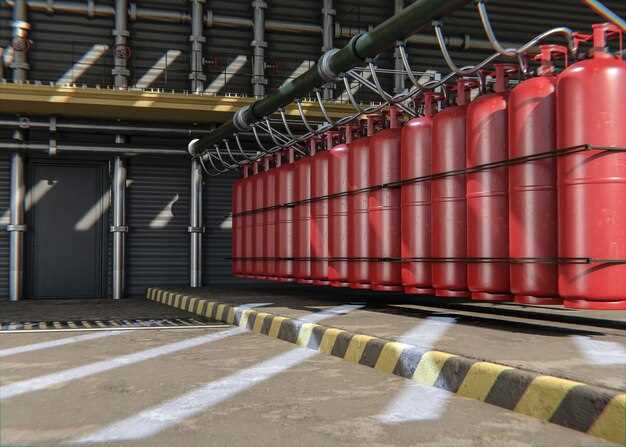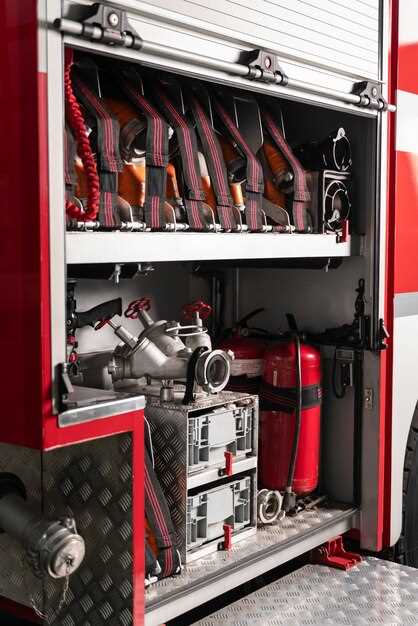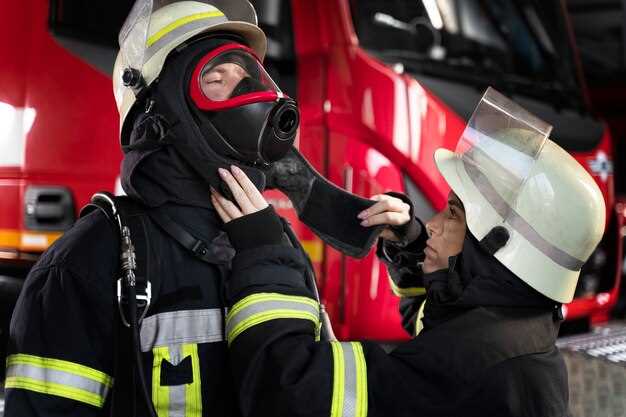

In the high-octane world of motorsport, safety is paramount. Among the many components that ensure the well-being of drivers and teams, fire suppression systems stand out as a critical line of defense against the potential hazards associated with racing. These systems are specifically designed to rapidly detect and extinguish fires that can arise from fuel leaks, electrical malfunctions, or accidents.
Understanding the intricacies of fire suppression systems is essential for anyone involved in racing. These systems not only enhance the safety measures within a race car but also comply with stringent regulations set forth by governing bodies in motorsport. Different types of systems, including chemical agents and foam-based solutions, work to deliver effective fire control tailored to the unique challenges presented by high-speed racing environments.
Choosing the right fire suppression system is crucial for both competitive performance and driver protection. This guide will explore the various types of systems available, their functionalities, and the considerations that should be taken into account when equipping a race car for optimal system performance and safety during races.
Choosing the Right Fire System for Your Race Car
When it comes to motorsport, safety is paramount. Selecting the appropriate fire suppression system for your race car is crucial for both driver protection and compliance with racing regulations. Various factors should be considered to ensure you choose the best option for your specific needs.
Type of Fire Suppression System: There are mainly two types of fire systems: automatic and manual. Automatic systems deploy extinguishing agents immediately when a fire is detected, which can be vital in high-speed racing scenarios. Manual systems require the driver to activate them, offering control but potentially delaying response time during critical moments. Evaluate which type aligns with your racing style.
Extinguishing Agents: Fire systems use different agents such as water, foam, CO2, and dry chemical powders. Each agent has unique properties and effectiveness against different classes of fires. For instance, CO2 is excellent for electrical fires, while foam is more suitable for liquid fires. Understanding the common fire risks in motorsport will help in selecting the right agent.
Weight and Space Considerations: Race cars have limited space and weight restrictions. Choose a fire suppression system that fits within these constraints without compromising performance. Lightweight systems are available that provide effective protection without adding excessive weight to the vehicle.
Compliance with Regulations: Always check the rules and regulations of the racing organization you’re participating with. Many series have specific requirements regarding fire suppression systems. Compliance not only ensures you meet safety standards but also avoids disqualification during events.
Budget and Maintenance: Consider your budget when choosing a fire system. While investing in high-quality systems may require a higher initial expenditure, the reliability they provide can save lives and minimize damage. Additionally, ensure that you understand the maintenance requirements of the system; regular checks and recharges are vital to ensure readiness during competitions.
In summary, choosing the right fire suppression system for your race car is a decision that requires careful consideration of type, extinguishing agents, weight, regulations, and maintenance. Prioritize safety to enhance not just your protection but also your performance on the track.
Installation Guidelines for Fire Suppression Systems

When installing a fire suppression system in race cars, several key considerations must be taken into account to ensure maximum safety and efficiency. First, select a system that is specifically designed for motorsport applications, as these systems are engineered to withstand the extreme conditions encountered on the track.
Begin by determining the optimal location for the fire suppression system components. The most effective placement is typically within the cockpit and engine compartment, where the risk of fire is greatest. Ensure that no obstructions hinder the discharge of the system, as proper delivery of the extinguishing agent is crucial for rapid fire control.
Next, adhere to manufacturer guidelines during installation. Follow specific torque specifications and mounting requirements for all components, including tanks, nozzles, and activation switches. This will not only ensure the reliability of the system but also comply with racing regulations.
It is essential to conduct thorough tests of the system after installation. Implement a regular maintenance schedule to check for leaks, ensure proper functionality, and replace components as needed. Familiarize yourself with the activation mechanism and make it easily accessible to the driver and crew, ensuring that quick action can be taken in the event of an emergency.
Lastly, educate all team members about the fire suppression system, including its operation and the importance of fire safety in motorsport. A well-informed team can significantly enhance safety during races and mitigate potential hazards associated with fire incidents.
Routine Maintenance and Inspection of Fire Systems

Regular maintenance and inspection of fire suppression systems in motorsport vehicles are crucial for ensuring safety and performance. Fire systems should be examined consistently to detect any signs of wear, damage, or malfunction. The following key areas should be included in routine checks.
Firstly, all components of the fire system, such as extinguishers, nozzles, and activation mechanisms, must be visually inspected. Look for corrosion, leaks, or physical damage that could impair functionality during an emergency. Any damaged parts should be replaced immediately to maintain optimal operation.
Secondly, it is essential to check the pressure levels of extinguishers and verify that they are within the manufacturer’s specified range. Extinguishers that are out of pressure specifications can lead to inadequate fire suppression in critical situations.
Furthermore, the activation system must be tested regularly. This includes verifying that electronic components are functioning properly, ensuring that manual pull cables are free of obstructions, and checking that the trigger mechanisms respond reliably.
Documentation of inspections and maintenance activities is also important. Keeping a thorough log helps track the system’s history and provides valuable information for performance assessments over time. Additionally, following the manufacturer’s guidelines for servicing intervals will help maintain compliance and extend the lifespan of the fire system.
Finally, training personnel on the operation of fire systems, including performing routine checks, is an essential aspect of safety in motorsport. Ensuring that all team members understand how to quickly identify issues and respond effectively can significantly reduce the risks associated with fire hazards on the track.







